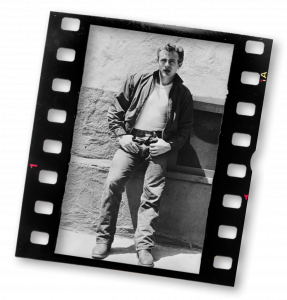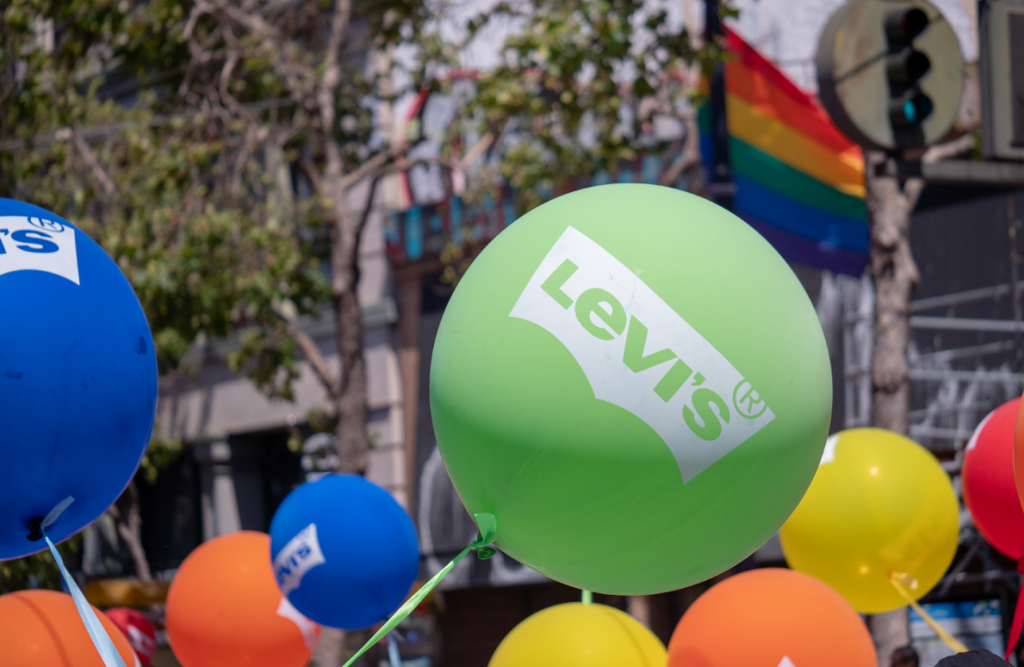It’s 1955.
A young actor, James Dean, captivates America’s youth after starring in East of Eden and Rebel Without a Cause. As he rises to fame an image of Dean dressed in a white T-shirt, leather jacket, and a pair of Levi’s jeans becomes one of the most legendary photos in pop culture history. It personifies the Levi’s 501 jean, and later (arguably) changes the way we dress today.
Would it surprise you to know that this iconic brand and company is family-controlled – nearly 170 years old and in its 5th generation?
It’s an inspiring story of a successful family business that did what was necessary for the longevity of both the family and the business by paying close attention to financial and non-financial goals. Over the decades, this business family encountered peaks and valleys, massive successes and failures, hired a non-family member as CEO, went private and public (twice!) – and yet somehow has survived and remained family-controlled to this day. Its revenues are in the billions and it has fostered a rich family history of impactful philanthropy and community leadership.
Levi Strauss & Company’s roots are in the California Gold Rush of the mid-1800s. Founder and Bavarian-born, Levi Strauss emigrated to New York and later moved to California to establish a wholesale dry goods business. One day, in 1872, a letter from one of his customers led to a drastic change in the business – one that gave birth to the quintessential American garment known as blue jeans. They were specifically designed for California’s gold miners who needed a durable pant (with pockets) to carry their tools and materials. Later, Levi’s jeans would become a favourite of those who did any type of physical labour, soldiers in the U.S military and (eventually) a staple in our world of fashion.
And they remain that way today.
As his company grew, Levi carried on with other business pursuits and eventually became one of San Francisco’s greatest philanthropists. When he passed in 1902, Levi and his wife had no children so he passed the family business to his four nephews – a move that preceded decades of significant expansion for Levi Strauss.

Securing the next generation
In addition to passing on the business, Levi left his nephews (Jacob, Sigmund, Louis and Abraham Stern) with an estate of $6 million, an enormous sum at the time. But, over the years, sales began to plummet – to the extent that the four nephews contemplated liquidating the family business.
Fortunately, the next generation of family management – the Haas family, descendants of Levi Strauss via the Stern family – was in the process of joining the business. This move would ultimately secure the family legacy (and business) for decades to come:
- It was now the late 1920s and the third generation for the business. Jacob Stern’s son-in-law, Walter A. Haas joined the company and strongly urged keeping the business. He had a vision, and within two years of becoming President of the company managed to significantly boost profits by shifting the business from dry-goods to manufacturing and distribution. The company diversified its product line and began targeting younger buyers of Levi’s jeans.
- Walter’s son, Walter Jr., joined the company in 1939 and eventually became CEO and President (1958-1976). As the fourth-generation leader (alongside his brother, Peter Haas) he focused on expanding internationally. This led to his decision to take Levi Strauss public in 1971 – a move that increased overall capital and enabled further expansion of the business.
 The stumbles along the way
The stumbles along the way
Eventually, the company (and the family) encountered difficulties.
As the fifth (and final) family member to lead the company, Robert Haas (son of Walter Jr.) stumbled. The business became too complex, unfocused, with too many decision makers. Profits suffered. The business began to decline.
By 1984, Robert decided to take the family business private once again in a $1.7 billion leveraged buyout. But it didn’t seem to move the needle. Throughout the late 80s and into the 90s, sales remained down. Family members soon wanted out. Some began calling for a new CEO.
And that was a critical juncture for the Haas family and its iconic business.
‘From operators to owners’
The family eventually agreed it was time for significant change. It made the decision to look, for the first time, to hire a non-family member to lead the company. This is a key shift in thinking for many business families.
Enter Chris Bergh, who became CEO in 2011. He quickly set out to address fundamental issues the family business needed to fix, including:
- Defining a clear strategy for Levi Strauss & Co.;
- Aligning the organization;
- Transforming the brand to compete in an evolving and hyper-competitive leisure-wear market; and
- Creating shareholder value for the Haas family by increasing sales and decreasing debt levels.
Eventually, Bergh decided it was time to take Levi’s public once again.
So, in 2019, Levi Strauss & Company officially went public for the second time in its 169-year history. This time, the move seems to have produced wins for both the business and the Haas family.
- Despite no family members on the board or in leadership roles, the family remains the largest shareholders, controlling just north of 75% of the company’s shares and voting rights, thanks to a dual class stock structure.
- Today, the Haas family’s shares are worth a bit more than nine times what they paid in the 1984 leveraged buyout. Their collective net worth is over $4 billion. And revenues are up nearly 30% from 2020.
- There are also plans in motion to expand and innovate the business by offering a more convenient shopping experience using AI. The company has also acquired the major active wear brand, Beyond Yoga.

Through it all, the family has been consistent in its approach and commitment to community leadership, philanthropy, and sustainability – including:
A commitment to sourcing environmentally friendly fiber and using natural dyes – all designed for recyclability.
- Donating millions to its past and present employees and fellow surrounding communities through the Haas family charitable organization – Red Tab Foundation (RTF).
- Building a rich history of championing women and minorities in the workplace. Levi Strauss was recognized by Forbes as one of the world’s ‘top female-friendly’ companies in 2021. And they walk that talk on this too, ensuring significant representation at both the Board and executive levels.
- From Levi’s original trek to California from Germany – through the ups and downs of a private and public business – life has been a true journey for the Strauss, Stern and Haas families. They stuck with it, endured and survived in challenging times.
In the end, their patience and resilience kept the legacy and family business alive – a legacy Levi Strauss would be proud of.
Questions to consider for your business:
- What is your family’s approach on hiring outside management for the operating company?
- Are your family members aligned on the vision for both the business and the family?
- Does your family have a common set of values around sustainability, philanthropy and community leadership?
Christina Outridge is a Marketing and Communications Specialist at Creaghan McConnell Group
Download and view this as a PDF here.
